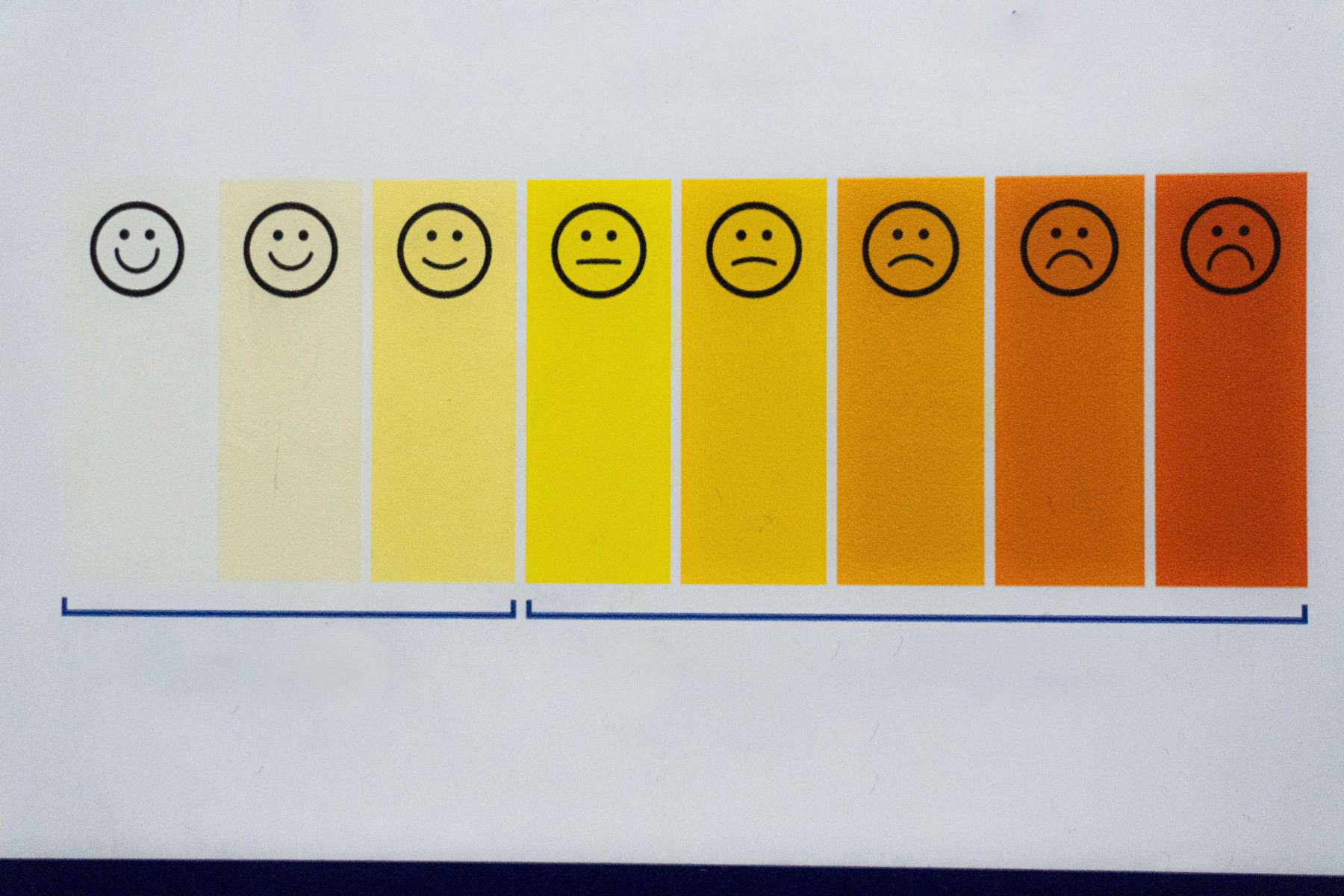Urine Colour Chart: Here’s What Your Urine’s Colour Can Say About Your Health

TABLE OF CONTENTS
Ever looked at the colour of your pee and thought, why is your urine that colour? Your urine can be pale yellow, dark amber, pink, and even green. It isn't just waste—it's an indicator of your health. Hydration, infection, or even liver issues: the urine colour chart can unlock the mystery of what's going on in your body. This blog will discuss what the colours of your urine indicate about your health.
Urine Colour Chart & What Each Colour Indicates
Let's go through some of the urine colours, what they mean, and when to be alarmed.
1. Clear Urine – Drinking Too Much Water?
Clear urine means you're drinking lots of water—maybe even too much. It's great to be hydrated, but excess water can dilute important electrolytes in your system. [1] If your urine is always clear and you're not actively overhydrating, it could be an indication of liver disease like cirrhosis or hepatitis.
2. Pale Yellow to Amber – The Normal Range
The healthy urine colour should be pale yellow to amber due to urochrome, which is a pigment created when your body is processing haemoglobin. The more fluids you consume, the lighter your urine. However, if it's too dark, then it may be that you are dehydrated.
3. Neon Yellow – Excessive Vitamins
Ever taken a multivitamin and seen bright yellow urine? That's your system expelling excess B vitamins (in the form of riboflavin). Don't panic, as it's just your body removing what it doesn't require.
4. Orange Urine – Dehydration or Liver Problems?
Orange urine generally indicates dehydration, but it may indicate liver or bile duct disease if accompanied by pale stools. Some medications, such as sulfasalazine and phenazopyridine, can also produce orange urine. [2]
5. Red or Pink Urine – Food or Something More Serious?
A diet of beets, rhubarb, or blueberries might temporarily colour urine pink or red. But if it occurs without food reasons, it may be UTI pee blood, kidney stones, or more severe illnesses such as bladder or kidney tumours. Always consult a doctor if you see repeated red urine.
6. Dark Brown Urine – A Warning Sign
Dark brown or tea-coloured urine may result from dehydration, liver disease, or muscle destruction (rhabdomyolysis). It can also be caused by some drugs or by drinking too much fava bean or rhubarb. If hydration does not clear it up, consult a physician.
7. Blue or Green Urine – Unusual but Possible
The green or blue colour is usually due to food dye or medication such as amitriptyline, indomethacin, or methylene blue. On rare occasions, infection with the Pseudomonas bacterium or familial benign hypercalcemia, a hereditary condition, can be responsible. [3]
8. Milky or Cloudy Urine – Infection Warning
Cloudy urine is a possible sign of a urinary tract infection (UTI), kidney disease, or chronic disease. [4] Pregnant women should also be vigilant if their urine is cloudy because it can be a sign of preeclampsia.
When Should You Worry?

Temporary urine colour changes are not anything to worry about, but certain colours are a sign of an underlying disease. Here's when you should worry:
1. Chronic Dark Urine (Brown or Tea-Coloured)
If your urine is still dark brown after consuming sufficient fluids, it may mean one of the following:
Liver disease: Diseases such as hepatitis or cirrhosis lead to bile pigments entering the urine.
Rhabdomyolysis: A condition where muscle fibres disintegrate and proteins are released into the blood, which may result in damage to the kidneys.
Some drugs: Antibiotics such as metronidazole or muscle relaxants such as methocarbamol, make urine darker.
2. Red or Pink Urine (Possible Blood in Urine)
Noticing red or pink urine out of the blue? It may not be your dinner alone. Possible reasons are:
Haematuria (blood in urine): This may be due to a urinary tract infection, kidney stones, or bladder problems. UTI pee blood symptoms usually are pain and a frequent urge to urinate.
Kidney or bladder issues: Infection, tumour, or enlarged prostate may cause blood in the urine.
Foods and medications: Beets, rhubarb, and some drugs like rifampin may turn urine red, but unexplained red urine is something that should be checked by a doctor.
3. Cloudy or Foamy Urine (Possible Infection or Kidney Problems)
Urinary tract infections (UTIs): One of the most frequent symptoms of UTIs is cloudy urine, usually with an unpleasant odour or burning sensation during urination.
Kidney disease: Frequent foamy urine can indicate protein loss, a very early sign of kidney disease.
Complications of pregnancy: Cloudy pregnancy urine may represent preeclampsia, a medical condition that needs emergency care.
4. Orange or Bright Yellow Urine (Hepatic or Bile Duct Problem Possible)
Dehydration: Insufficient water intake makes urine dark orange or yellow.
Liver disorders: Orange-coloured urine, particularly combined with pale-coloured stools or jaundice (yellowish discolouration of skin and eyes), might represent bile duct issues.
5. Blue or Green Urine (Rare but Noteworthy)
Medications and dyes: Certain drugs and food colourings can cause blue or green urine.
Bacterial infections: A Pseudomonas aeruginosa infection can turn urine blue-green, indicating a rare but serious health condition.
Genetic conditions: Familial benign hypercalcemia (also called "blue diaper syndrome") can cause blue urine.
If any of these symptoms persist despite lifestyle changes, consult a doctor. Unusual urine colour can be a valuable health clue, so don’t ignore it!
What Determines Urine Colour?
Urine colour isn't just a matter of whether you drink lots of water or not. There are many factors at work, including diet and health issues, that show up in your pee.
1. Hydration Level (Most Common Factor)
If you drink a lot of water, your urine becomes lighter. As water intake decreases, urine becomes darker and even yellow. Not drinking enough water increases the risk for urinary tract infections and kidney stones, too; you should maintain balance.
2. Diet and Supplements
Some foods and vitamins can change the colour of urine:
Beets, rhubarb, and blueberries can turn your urine reddish or pink.
Carrots and sweet potatoes sometimes also tint your urine orange.
Sometimes Asparagus and Brussels sprouts can give urine a green tinge.
High doses of B vitamin supplements make urine look neon yellow.
Vitamin C in high doses can leave your urine cloudy.
3. Medications
Certain drugs have the potential to change urine chart colours:
Antibiotics such as rifampin: Can change urine to red or orange.
Amitriptyline (a popular antidepressant): This is most often responsible for blue-green urine.
Senna-containing laxatives: Leads to red urine.
Metronidazole and chloroquine: These can cause dark brown urine.
If a new drug alters your usual urine colour, read the label or ask your doctor if it's a side effect.
4. Underlying Medical Conditions
Recurring changes in urine colour can be a sign of:
Liver disease (Hepatitis, cirrhosis): Can cause dark brown or orange-coloured urine due to bile overload.
Kidney disease: This can cause cloudy, foamy, or even red urine if protein or blood leaks through urine.
UTIs and bladder infections: Produce cloudy pee with a potent smell, previously followed by UTI pee blood symptoms in some cases.
Genetic illness: Some hereditary diseases, such as porphyria or hypercalcemia, are known to add an unusual shade of reddish purple to the urine.
Unless you notice repeated changes in ordinary pee, you can diagnose root diseases with a normal urine test.
Understanding the Urine Test Normal Range
A urine test's normal range is more than just colour—it tests pH, protein, glucose, and more. If your physician is suggesting a urine test, they're monitoring a number of indicators of health, not merely colour.
Final Thoughts
Your urine colour chart is a simple but effective health indicator. While minor colour changes are often harmless, persistent abnormalities should never be ignored. Keep an eye on your normal urine colour, stay hydrated, and don’t hesitate to consult a doctor if something seems off.
If you’re unsure about your urine test's normal range, visit your nearest super-specialty hospital to get tested today!
FAQs
1. Why is my urine bright yellow?
Bright yellow urine is typically the result of too many B vitamins, particularly if you take supplements. It's not a cause for concern and nothing to worry about.
2. Should I worry about red urine?
If you've recently consumed beets or berries, it's probably food. But if you notice red urine colour for no apparent reason, it might be blood in urine due to a UTI, kidney stones, or other disorders. Get it checked by a doctor.
3. What is cloudy urine?
Cloudy-coloured urine may mean you have a UTI, kidney disease, or are dehydrated. If it hurts to pee or has a strong odour, get it checked out.
4. How do I maintain the proper colour of my urine?
Drink plenty of water, eat well, and watch medications that can influence your urine chart. If it doesn't feel right, see a doctor.
5. Is dark urine always bad?
Not necessarily. It can simply be dehydration. But if it continues even with adequate fluid intake, it may be an indication of liver disease or other diseases.
Citations
About Porphyria. (n.d.). American Porphyria Foundation. https://porphyriafoundation.org/for-patients/about-porphyria/
Cleveland Clinic. (2021, September 28). Cloudy Urine: Causes, Treatment, & What Does It Mean. Cleveland Clinic. https://my.clevelandclinic.org/health/symptoms/21894-cloudy-urine
Cleveland Clinic. (2024, September 17). Water Intoxication: Toxicity, Symptoms & Treatment. Cleveland Clinic. https://my.clevelandclinic.org/health/diseases/water-intoxication
Mayo Clinic. (2017). Urine color - Symptoms and causes. Mayo Clinic. https://www.mayoclinic.org/diseases-conditions/urine-color/symptoms-causes/syc-20367333
Moussa, M., Chakra, M. A., Papatsoris, A. G., & Dellis, A. (2022). Green urine due to Pseudomonas urinary tract infection: An unusual occurence. The American Journal of Emergency Medicine, 52, 249–250. https://doi.org/10.1016/j.ajem.2021.03.089




